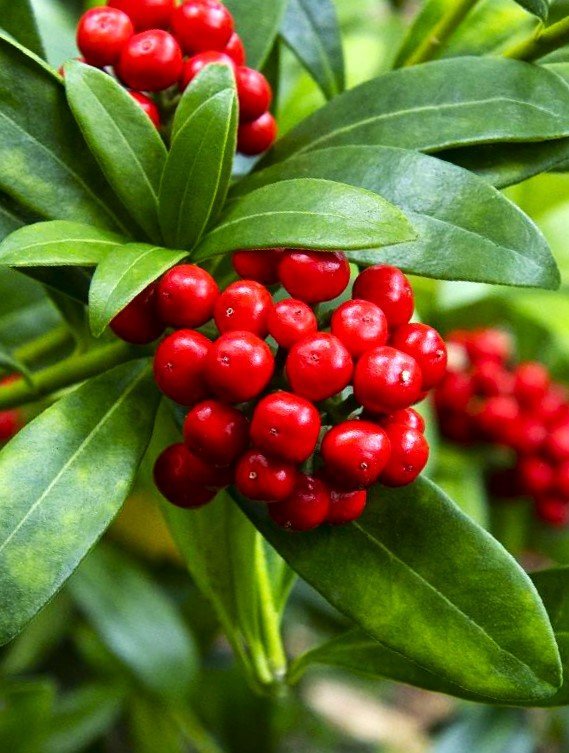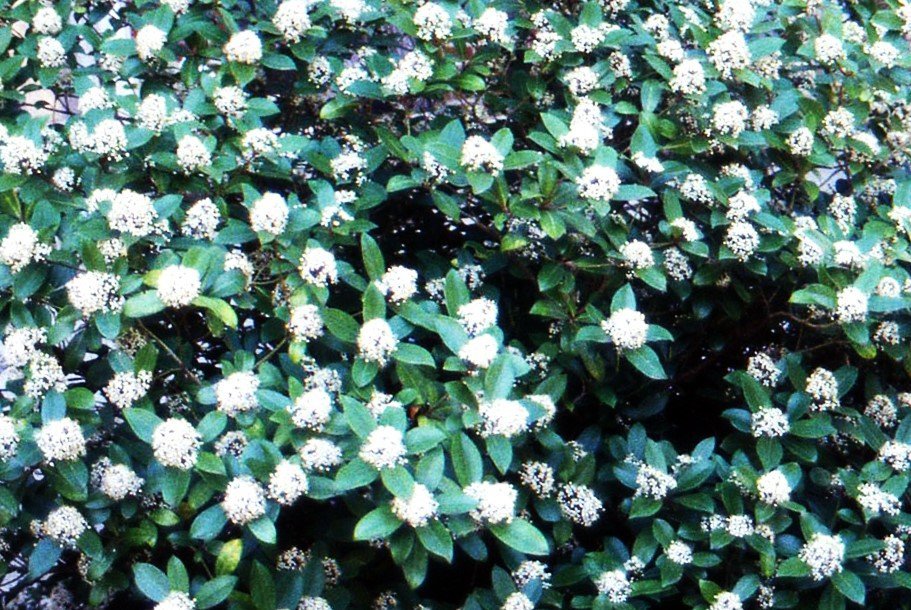 Image 1 of 4
Image 1 of 4

 Image 2 of 4
Image 2 of 4

 Image 3 of 4
Image 3 of 4

 Image 4 of 4
Image 4 of 4





Skimmia japonica (Japanese Skimmia)
Japanese skimmia is appreciated as a lightly fragrant, easy-care, low-growing broad-leaved evergreen shrub for shady spots. It matures into a dense, mounded form, ~2-4 ft. tall by 4-5 ft. wide.
Skimmia plants have male and female flowers on separate plants, with only the females bearing fruit. Female plants typically spread more than male plants, as well. Both male and female flowers produce mildly fragrant white flowers in spring, and the female"s flowers subsequently transition to red fruits (as long as there is a male plant nearby!). Male flowers are usually more fragrant and slightly larger than female flowers.
Skimmia grow best in organically rich, moderately fertile, well-drained soils in part shade to full shade, but they can also tolerate sun-dappled conditions. However, the foliage may scorch in full sun, and they will be less drought tolerant in too much sun. Deer and rabbit resistant.
Japanese skimmia is appreciated as a lightly fragrant, easy-care, low-growing broad-leaved evergreen shrub for shady spots. It matures into a dense, mounded form, ~2-4 ft. tall by 4-5 ft. wide.
Skimmia plants have male and female flowers on separate plants, with only the females bearing fruit. Female plants typically spread more than male plants, as well. Both male and female flowers produce mildly fragrant white flowers in spring, and the female"s flowers subsequently transition to red fruits (as long as there is a male plant nearby!). Male flowers are usually more fragrant and slightly larger than female flowers.
Skimmia grow best in organically rich, moderately fertile, well-drained soils in part shade to full shade, but they can also tolerate sun-dappled conditions. However, the foliage may scorch in full sun, and they will be less drought tolerant in too much sun. Deer and rabbit resistant.
Japanese skimmia is appreciated as a lightly fragrant, easy-care, low-growing broad-leaved evergreen shrub for shady spots. It matures into a dense, mounded form, ~2-4 ft. tall by 4-5 ft. wide.
Skimmia plants have male and female flowers on separate plants, with only the females bearing fruit. Female plants typically spread more than male plants, as well. Both male and female flowers produce mildly fragrant white flowers in spring, and the female"s flowers subsequently transition to red fruits (as long as there is a male plant nearby!). Male flowers are usually more fragrant and slightly larger than female flowers.
Skimmia grow best in organically rich, moderately fertile, well-drained soils in part shade to full shade, but they can also tolerate sun-dappled conditions. However, the foliage may scorch in full sun, and they will be less drought tolerant in too much sun. Deer and rabbit resistant.
